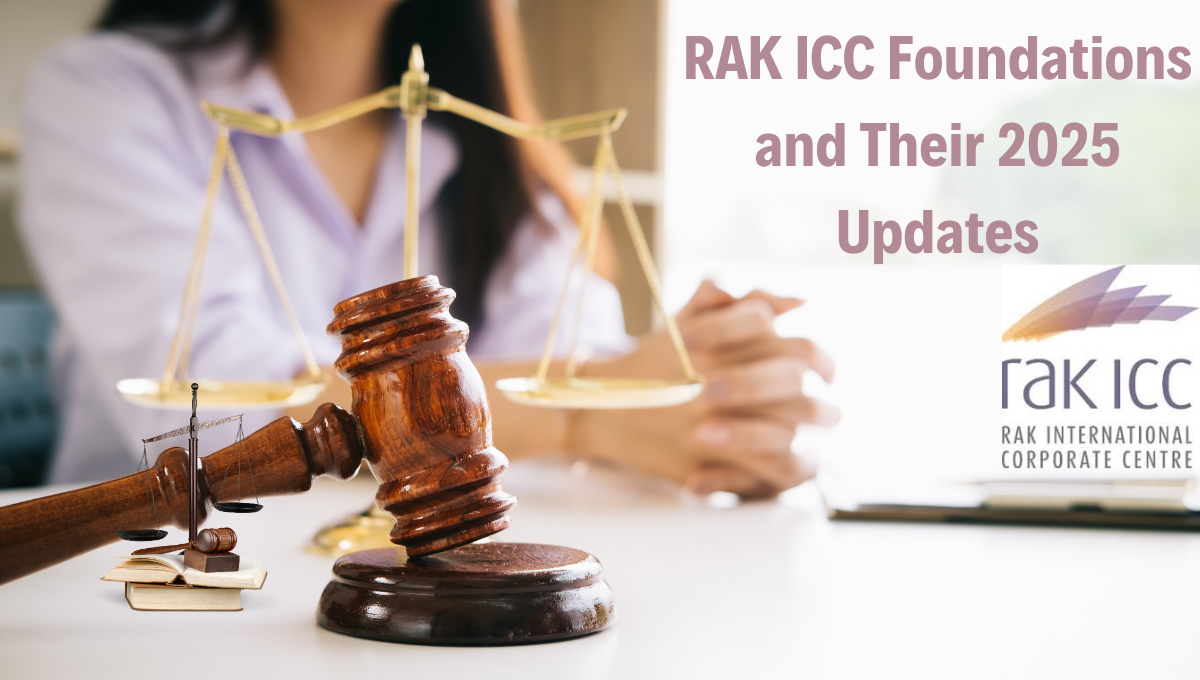I. Introduction: Your Wealth, Secured for Tomorrow
In today’s fast-paced world, managing and protecting your wealth for the long term, while ensuring it benefits future generations or causes you care about, can be complex. This is where RAK International Corporate Centre (RAK ICC) Foundations come in. Think of them as a smart, flexible tool for managing your global assets. They combine the best features of traditional company structures (like having their own legal identity) with the adaptable, purpose-driven nature of trusts. This unique blend makes RAK ICC Foundations an excellent choice for safeguarding assets, planning for your legacy, and supporting charitable initiatives. They’re designed to last, offering a modern way to secure your financial future.
The world of international wealth management is always changing, influenced by global events, new rules, and the unique needs of wealthy individuals and families. Recognizing this, RAK ICC has introduced significant updates: the “RAK ICC Foundations Regulations 2019, Amendments 2025,” which became effective on July 31, 2025. These aren’t just minor tweaks; they are strategic enhancements designed to make RAK ICC Foundations even more reliable, secure, and appealing for sophisticated wealth planning. These changes directly address modern challenges in managing wealth across borders, aiming to provide a more stable and predictable environment for your assets.
These updates show that RAK ICC is actively working to keep its framework strong and relevant in a world where global wealth is under increasing scrutiny. By strengthening its legal foundation, RAK ICC is committed to offering a robust, predictable, and secure environment for preserving wealth and passing it down through generations. This move is set to solidify RAK ICC’s reputation as a trusted and innovative hub for international financial services.
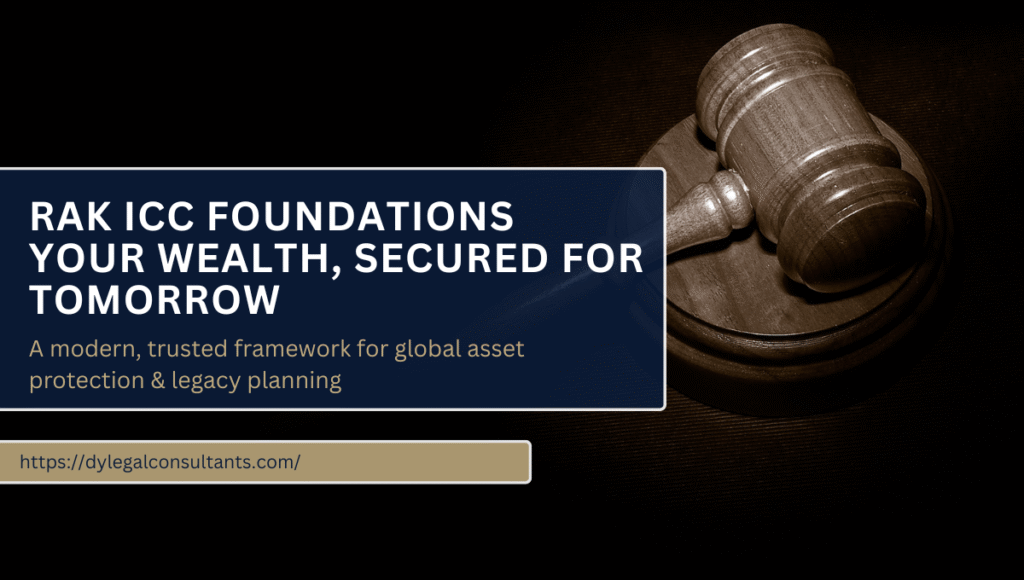
Also Read: Construction Contract Lawyers in Dubai
II. What’s New in the 2025 Amendments? Enhanced Security and Clarity
The 2025 amendments are a clear sign of RAK ICC’s dedication to improving its rules for Foundations. These comprehensive updates bring targeted improvements in key areas like protecting assets, handling claims from creditors, resolving disputes, and making operations more flexible. The main goal is to boost the protective features and legal clarity that RAK ICC Foundations offer to those who set them up (founders) and those who benefit from them (beneficiaries).
These changes are carefully crafted to further establish RAK ICC as a top jurisdiction for wealth management. By increasing legal certainty and providing stronger safeguards, the aim is to build greater confidence among Founders, Council members, and beneficiaries. This, in turn, is expected to attract more complex and substantial wealth structures, helping RAK ICC’s financial ecosystem grow and become even more sophisticated.
The amendments cover crucial aspects such as better asset protection, clear legal finality, responsible handling of creditor claims, and efficient ways to resolve disagreements. Each of these areas often presents a challenge for wealthy individuals and their advisors when considering offshore jurisdictions. Strengthening all these aspects simultaneously shows a thoughtful and integrated strategy. It suggests that RAK ICC is not just reacting to individual issues but is proactively building a comprehensive framework that anticipates and reduces a wide range of risks faced by international wealth.
This deliberate and integrated approach to regulatory enhancement can lead to a significant increase in the number and complexity of wealth structures choosing RAK ICC, fostering economic growth, attracting specialized legal and financial talent, and further cementing RAK ICC’s standing in the global financial services sector. It signals a move towards becoming a preferred location for intricate, multi-country wealth planning.
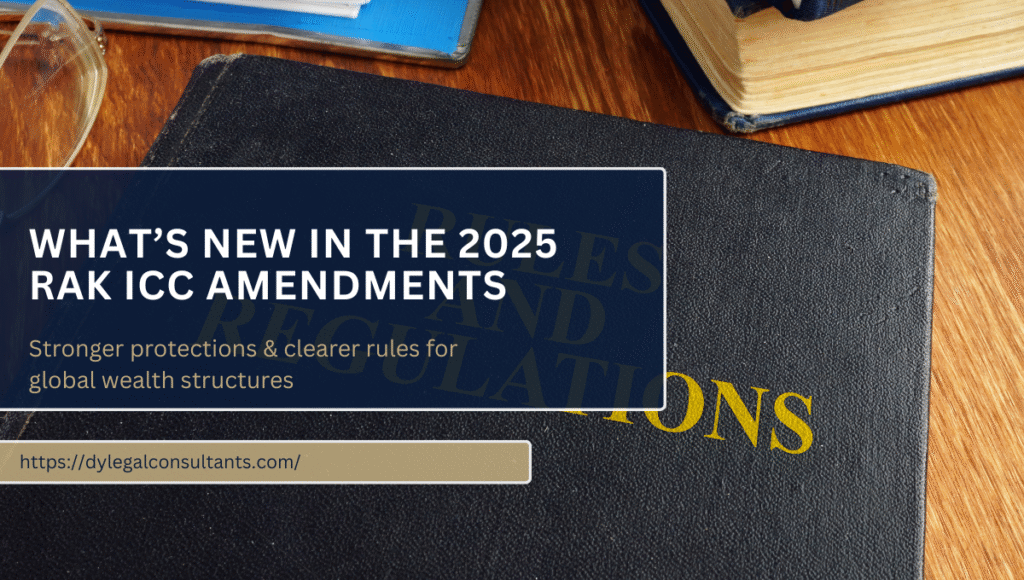
Also Read: Expert Business Partnership Dispute Lawyer in Dubai
Table 1: Key 2025 RAK ICC Foundations Amendments: A Quick Look
| Amendment Highlight | What It Does (Key Change/Feature) | Why It Matters (Strategic Benefit for Your Wealth) | Relevant Clause |
| Firewall Provisions | Acts like a strong shield, protecting Foundation assets from foreign court orders and laws that might conflict with RAK ICC rules. | Provides powerful asset protection, especially against forced inheritance laws or other legal challenges from outside the UAE. | Regulation 7(1), 7(5) |
| Three-Year Statute of Limitations | Sets a clear time limit of three years for anyone to challenge the creation of a foundation or the transfer of assets into it. | Offers crucial legal certainty and peace of mind, ensuring your long-term wealth plans become final and secure after this period. | Regulation 68A |
| Cause of Action Provisions | If a Founder tried to defraud a creditor by transferring assets, the Foundation is only liable for that specific asset (and its growth), not the entire Foundation. | Balances asset protection with fairness to legitimate creditors, protecting the overall Foundation from being completely undone by a single fraudulent transfer. | Regulation 7(3), 7(4) |
| Duress Protection Clause | Safeguards the Foundation and its officers from being forced to act under pressure, like coercive legal processes or unauthorized demands from foreign authorities. | Provides enhanced resilience against political interference and external pressures, helping maintain the Foundation’s independence and your privacy. | Regulation 25A |
| Strengthened Arbitration Framework | Makes it clearer and easier to resolve disputes through private arbitration, giving arbitrators strong, court-like powers. | Ensures sensitive family wealth disputes can be resolved privately, flexibly, and efficiently, avoiding public court battles. | Regulation 67, 67A |
| Private Trustee Foundation Provisions | Clarifies that while a foundation owns its own assets, it can also hold other property as a trustee, combining different legal structures. | Allows for highly flexible “hybrid” structures, blending the corporate identity of a foundation with the specific asset management and fiduciary duties of a trust. | Regulation 4(3) |
III. Diving Deeper: How These Changes Benefit Your Global Wealth
A. A Strong Shield for Your Assets: Firewall Provisions (Regulation 7(1) & 7(5))
Imagine a robust firewall protecting your digital information; RAK ICC Foundations now offers a similar legal firewall for your assets. Regulation 7(1) clearly states that if you transfer property to a foundation, and that transfer is valid under RAK ICC laws (which can be either DIFC Courts or ADGM courts), it cannot be undone or challenged by “foreign law.”1
This means even if laws in another country don’t recognize foundations, or if they have rules about forced inheritance (“Heirship Rights”) or claims from “Personal Relationships” (like marital property claims), these foreign laws won’t invalidate your asset transfer to a RAK ICC Foundation. This is a huge relief for individuals who want to ensure their assets are managed according to their wishes, free from the complexities of their home country’s laws.
To further strengthen this protection, Regulation 7(5) states that any foreign court judgment that goes against these firewall rules will simply not be recognized or enforced by the RAK ICC Court. This creates a powerful two-layer defense: first, preventing foreign laws from applying to your asset transfers, and second, blocking foreign judgments based on those conflicting laws.
These provisions are incredibly important for international wealth planning, especially for those from civil law countries or navigating complex family situations. They offer a strong legal shield, ensuring that assets placed in a RAK ICC Foundation are protected from challenges based on foreign forced heirship rules, marital claims, or other conflicting foreign legal principles.
This gives you a very high degree of certainty and security, making RAK ICC highly appealing for anyone looking to manage and distribute their wealth exactly as they intend, without interference from their home country’s laws. This strong legal basis for resisting attempts by foreign claimants to “shop for a favorable jurisdiction” significantly enhances the long-term integrity and stability of your Foundation structure.
B. Peace of Mind for the Long Term: The Three-Year Statute of Limitations (Regulation 68A)
One of the biggest worries in long-term wealth planning is the possibility of future challenges to your arrangements. Regulation 68A introduces a clear time limit for such challenges, providing much-needed legal certainty. It states that no one can start a legal action to undo the creation of a foundation or to challenge any assets transferred to it after three years. This three-year clock starts ticking from the date the Foundation was set up, the date the property was transferred, or when the right to challenge first appeared, whichever applies.
This rule also applies to anyone claiming they had an interest in property before it was transferred to a foundation and now want to claim a legal right to it. This provision is a cornerstone for long-term wealth planning, offering crucial legal certainty and finality. Without a clear time limit, your carefully planned structures could theoretically be challenged indefinitely.
The three-year statute of limitations directly addresses this by providing a definitive timeframe after which your foundation’s establishment and its asset transfers are largely safe from legal attack. This creates a strong sense of permanence and legal finality. Once this period passes, your Foundation and its assets become highly resilient to challenges, significantly reducing the risk of lengthy legal battles and ensuring the stability of your wealth structure for the future. Generations. This certainty is invaluable for passing down wealth, allowing Founders to be confident that their succession plans, once past the three-year mark, will hold firm.
This reduces anxiety about future disputes and provides a stable platform for family wealth governance. This feature makes RAK ICC Foundations particularly attractive for families focused on long-term legacy planning, as it minimizes the risk of old claims resurfacing years or decades later, thereby safeguarding the intended distribution and purpose of the wealth. It also encourages any legitimate claimants to act promptly, contributing to overall legal efficiency.
C. Fair Play with Creditors: Cause of Action Provisions (Regulation 7(3) & 7(4))
RAK ICC is committed to protecting your assets while also ensuring fairness to legitimate creditors. Regulation 7(3) addresses specific situations where a founder or contributor might have transferred property to a foundation with the intention to defraud a creditor, and this transfer made them unable to pay their debts. In such precise cases, the transfer itself is
not cancelled. Instead, the Foundation becomes responsible for satisfying the creditor’s claim, but only up to the value of the interest the Founder or Contributor had in that specific property before the transfer, plus any growth on that transferred property.
Regulation 7(4) further clarifies that a creditor’s ability to recover is strictly limited to that specific property or its proceeds.1 This means they cannot make a claim against the Foundation itself or any
other property of the Foundation that wasn’t part of the proven fraudulent transfer. These rules strike a crucial balance. While RAK ICC offers strong asset protection, it also ensures it doesn’t become a haven for fraudulent activities, which helps maintain its global reputation. The key here is the
limitation of liability. The entire Foundation isn’t jeopardized; only the specific asset involved in the proven fraudulent transfer (and its direct proceeds) is at risk. This protects the rest of the Foundation and the interests of its legitimate beneficiaries while still providing a clear path for creditors in cases of clear, proven fraud and insolvency.
This approach aligns RAK ICC with international standards for responsible financial jurisdictions, assuring legitimate international financial institutions, regulators, and legal bodies that RAK ICC is a responsible jurisdiction. It differentiates RAK ICC Foundations from structures perceived as mere “debtor havens,” fostering trust and making them a more widely accepted and sustainable tool for legitimate wealth planning, while still providing robust protection against unsubstantiated or opportunistic claims.
D. Protecting Against Pressure: The Duress Protection Clause (Regulation 25A)
Regulation 25A introduces a powerful and unique safeguard designed to protect your RAK ICC Foundation from external pressures and coercion. This clause specifically instructs anyone with power over the Foundation (like founders, beneficiaries, or foundation officers) to only accept demands or requests that are given by individuals acting freely and willingly.
Crucially, it tells these individuals to ignore actions taken under compulsion or due to any legal process, order, or decree from any court (other than the RAK ICC Court), administrative body, or other authority (other than the RAK ICC Registrar). This protection applies as long as the person being compelled wouldn’t face personal liability or exposure by ignoring the demand. It also directs them to disregard demands from unauthorized persons.
This clause is incredibly valuable for founders and beneficiaries who might face political instability, risks of asset seizure, or aggressive legal or governmental tactics in their home countries. Beyond traditional creditor claims, wealthy individuals are increasingly worried about political instability, civil unrest, or aggressive government actions (like expropriation or asset freezes without proper legal process) in their home countries that could target their wealth.
These actions often involve forcing local representatives or family members to act against their will. Regulation 25A directly addresses this by legally empowering Foundation officers and other relevant persons to disregard demands made under duress from foreign authorities. This provides a clear legal mandate for Foundation officers to resist coercive demands that could undermine the Foundation’s objectives, compromise beneficiary privacy, or force an unwanted distribution or transfer of assets.
It acts as an internal firewall for the Foundation’s governance, creating a legal basis for non-compliance with coercive orders, provided it doesn’t expose the individual to personal liability. This clause offers a significant layer of protection that goes beyond typical asset protection against creditors. It provides a mechanism for maintaining control and privacy even in highly challenging geopolitical environments, making the RAK ICC Foundation a “safe haven” for wealth.
This makes RAK ICC Foundations exceptionally attractive for clients with significant political exposure, those operating in volatile regions, or families seeking to ensure the long-term security and autonomy of their wealth against unpredictable external pressures, signifying a forward-thinking approach to asset protection in a complex global landscape.
E. Resolving Disputes Privately: Strengthened Arbitration Framework (Regulation 67 & 67A)
The 2025 amendments significantly improve how disputes related to RAK ICC Foundations can be resolved, offering a compelling alternative to public court battles for sensitive wealth matters. Regulation 67 allows the Foundation’s Charter or By-laws to require that disputes (including “Administration Questions,” which are matters that could otherwise go to court) be settled through arbitration. This offers crucial flexibility to choose the location and rules for arbitration, allowing for a dispute resolution process that can be customized to your family’s unique dynamics, cultural background, and specific needs.
Such a provision acts as a binding arbitration agreement between the parties involved, just as if they had signed it under the relevant arbitration law. Even if arbitration isn’t required in the Foundation’s documents, parties can still agree in writing to arbitrate, and this agreement will also be legally binding. The relevant arbitration law (either DIFC Arbitration Law or ADGM Arbitration Regulations) will apply, and the RAK ICC Court can still issue orders to support or adjust its application as needed.
Crucially, Regulation 67A grants arbitral tribunals extensive “court-like powers” (unless the Charter or By-laws state otherwise) over the Foundation’s administration and the rights of any party during arbitration. This includes the power to appoint representatives for anyone involved (even minors, unborn, or unidentified persons) in an arbitration concerning a foundation. Disputes involving family wealth are often very personal, involve sensitive financial details, and can deeply affect family relationships.
Public court proceedings can worsen these issues, leading to reputational damage and further family division. Arbitration offers a private, confidential, and often more amicable way to resolve such disputes. Giving arbitrators court-like powers is a significant step, meaning arbitration is not a “lesser” form of dispute resolution but a strong alternative capable of issuing binding and enforceable decisions, including complex administrative orders.
This framework positions RAK ICC Foundations as an ideal vehicle for multi-generational wealth planning where maintaining family harmony and privacy is paramount. It allows for the proactive integration of sophisticated dispute resolution mechanisms directly into the Foundation’s constitutional documents, providing a clear and effective pathway for resolving future conflicts without resorting to public and potentially damaging litigation.
F. Blending Structures: Private Trustee Foundation Provisions (Regulation 4(3))
The concept of “Private Trustee Foundation Provisions” is addressed through the flexible capabilities allowed by the RAK ICC Regulations, specifically Regulation 4(3). While the regulations don’t introduce a new, explicitly named “Private Trustee Foundation,” Regulation 4(3) is highly relevant to this functional idea. It states: “The property of a foundation is not held by it upon trust for any other person. However, a Foundation may hold other property upon the terms of a trust.” This is a vital distinction. It means the Foundation’s own assets, its initial capital, and any later contributions that form its core property are owned directly by it as a separate legal entity, not held in trust for anyone. However, the second part of the provision clarifies that the Foundation can simultaneously act as a trustee for other property.
Traditionally, foundations (common in civil law systems) and trusts (common in common law systems) have been distinct tools with different legal characteristics. Foundations directly own assets, while trusts involve a trustee holding assets for beneficiaries. Regulation 4(3) blurs this traditional line by allowing trust-like features within a foundation’s legal framework. This offers significant structural flexibility, enabling a RAK ICC Foundation, with its corporate identity and perpetual existence, to also take on the fiduciary role of a trustee for specific assets or sub-funds.
For example, a foundation could own a holding company and then hold the shares of that company on trust for specific beneficiaries or for a particular charitable purpose. This allows you to combine the strong governance and legal certainty of a foundation with the beneficiary-focused administration and fiduciary duties found in a trust. This means a single RAK ICC Foundation can act as both an asset-owning corporate entity and a fiduciary for specific sub-assets.
For example, a foundation could hold a diverse portfolio, but certain illiquid assets or shares in a family business could be held “on trust” for specific family members or for a future charitable endowment, allowing for distinct governance and distribution rules for those specific assets. This flexibility is highly valuable for sophisticated wealth planners who need to create custom structures that cater to intricate family dynamics, diverse asset types, or specific charitable goals.
It offers a “best of both worlds” solution, combining the benefits of corporate personality (like lasting forever and limited liability for its own assets) with the oversight and beneficiary focus of a trust, enabling highly customized and adaptable wealth management solutions.
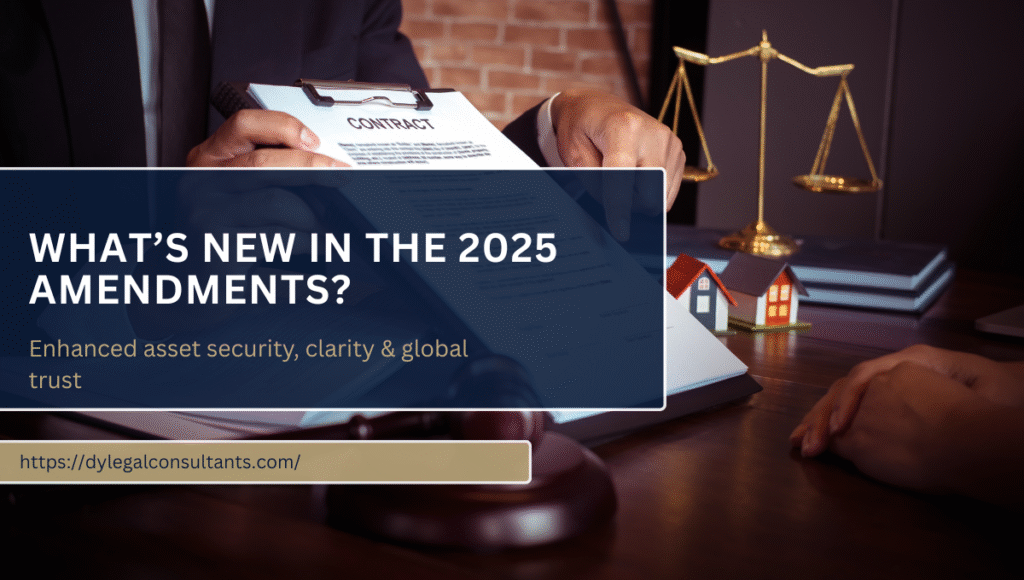
IV. Key Roles within a RAK ICC Foundation: Founder and Contributor
Understanding the distinct roles of a “Founder” and a “Contributor” is essential to appreciating the flexibility and adaptability of RAK ICC Foundations. While both play a part in endowing a foundation with property, their functions and implications differ significantly.
The Founder: The Architect of the Foundation
The founder is the individual or entity who initiates and establishes the foundation by contributing its initial property, as per Regulation 16. Think of the Founder as the architect or the original visionary. They lay the groundwork, define the Foundation’s core purpose (its “objects”), and set up its initial structure through the Charter and By-laws.
Crucially, the founder can reserve specific powers for themselves, provided these are clearly detailed in the Charter and are for a limited period (e.g., for their lifetime if a natural person, or up to 50 years if a legal entity). These reserved powers can include the ability to amend the Foundation’s terms, change its objects, direct investments, appoint or remove key officers, or even terminate the Foundation.1 This allows the founder to maintain a degree of control and influence over their legacy during their active involvement.
The Contributor: Expanding the Foundation’s Reach
A contributor, on the other hand, is defined as a person (other than the founder) who adds property to an already established foundation. The act of “contributing” means passing ownership of property to the Foundation, making it an asset of the Foundation. This role is vital for the ongoing growth and evolution of a foundation.
Practical Implications of the Contributor Role:
The distinction between a founder and a contributor, and the explicit recognition of the contributor’s role, offer several practical advantages for global wealth structuring:
- Dynamic Funding and Growth: A foundation is not limited to the founder’s initial endowment. Family members, other related entities, or even unrelated parties can contribute additional assets over time. This allows the Foundation to grow and adapt to changing financial landscapes or family needs without requiring a fundamental restructuring or the creation of new entities. For example, different generations of a family can contribute to a single foundation, pooling assets for a common purpose.
- Flexible Succession Planning: As wealth is passed down, different heirs or family branches might wish to add their own assets to a central family foundation. The Contributor role facilitates this, allowing for a continuous flow of wealth into the structure without altering the original Founder’s status or the Foundation’s core identity.
- Diversified Asset Sources: It enables a foundation to receive assets from various sources, which can be particularly useful for complex family wealth that originates from multiple businesses, investments, or inheritances. Each contribution can be managed according to the Foundation’s overall objectives or potentially under specific terms outlined in the bylaws for that contribution.
- “Person with Sufficient Interest” Status: Both Founders and Contributors are designated as “Persons with Sufficient Interest” in the Foundation. This is a key benefit, as it grants them certain rights, including the ability to request information about the Foundation’s financial statements, property, administration, and how its objects are being carried out. They can also apply to the RAK ICC Court for various orders, ensuring a level of oversight and transparency over the Foundation’s operations.1 This provides comfort and legal standing to those who have entrusted their assets to the Foundation.
- Clear Governance: While a founder can reserve significant powers, a contributor’s involvement is primarily through their contribution of assets. Their rights and influence are typically defined by the foundation’s bylaws or specific agreements, rather than inherent powers of establishment. This clear delineation helps maintain the Foundation’s established governance structure while allowing for broader participation in its funding.
In essence, the Contributor role provides a flexible mechanism for ongoing asset integration into a RAK ICC Foundation, making it a more versatile and enduring vehicle for multi-generational wealth management and philanthropic endeavors. It allows for a collective approach to wealth preservation, extending beyond the initial vision of the founder.
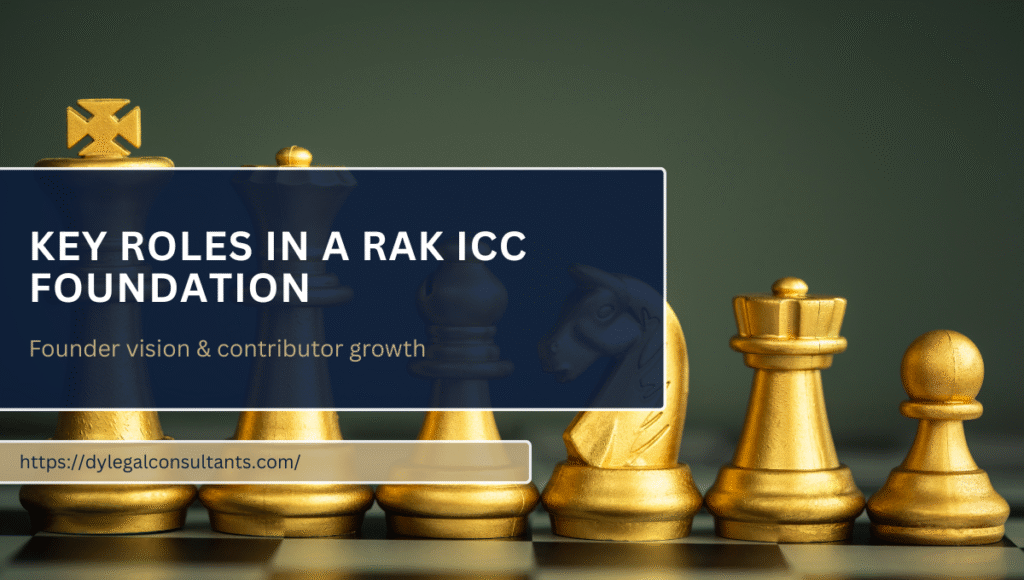
V. Strategic Implications for International Wealth Structuring
The collective impact of the 2025 amendments significantly bolsters the appeal of RAK ICC Foundations for international wealth structuring. The reinforced firewall provisions and the innovative duress protection clause offer an unparalleled level of asset security against foreign legal challenges and coercive actions. The introduction of a clear three-year statute of limitations provides definitive legal certainty and finality for wealth transfers, which is crucial for long-term planning.
The nuanced approach to creditor claims demonstrates a commitment to international best practices while maintaining robust protection for legitimate structures. Finally, the strengthened arbitration framework provides a private, flexible, and efficient means of dispute resolution, and the clarification regarding a foundation’s ability to hold property on trust offers significant structural flexibility for complex arrangements.
Modern wealth management faces many risks, including legal challenges (like creditor claims and forced inheritance), political instability (including asset seizure and sanctions), and internal family disputes. The 2025 amendments, when seen together, don’t just address isolated risks; they create an integrated solution. The firewall and duress clauses protect against external legal and political threats; the statute of limitations provides long-term legal finality; the creditor provisions ensure legitimacy and international acceptance; the arbitration framework offers a private solution for internal family conflicts; and the trust-holding ability adds structural adaptability.
The combined effect of these amendments creates a comprehensive and synergistic risk mitigation strategy. It is about building a wealth structure that is resilient from multiple angles, protecting both the assets and the integrity of the founder’s intentions. This positions RAK ICC as a jurisdiction that offers a “future-proof” framework for global wealth, moving beyond basic offshore services to provide sophisticated legal architecture designed to navigate the complexities and uncertainties of the modern global economy, appealing to a discerning clientele seeking long-term security and control over their legacy.
These amendments make RAK ICC a particularly compelling option for various types of clients:
- High-Net-Worth and Ultra-High-Net-Worth Individuals (UHNWIs): Especially those from countries with compulsory inheritance laws or political instability, seeking strong asset protection and long-term security for their global assets.
- Entrepreneurs and Business Owners: They need legal certainty and a stable framework for their succession planning and the smooth transfer of business interests across generations.
- Families with Complex Dynamics: Families will benefit from private and customized dispute resolution mechanisms that can help preserve family harmony and flexible structuring options to accommodate diverse family needs and goals.
- Philanthropic Endeavors: Who can use The Foundation’s robust structure can be used for long-term charitable objectives, enhanced by superior governance and protection against external interference.
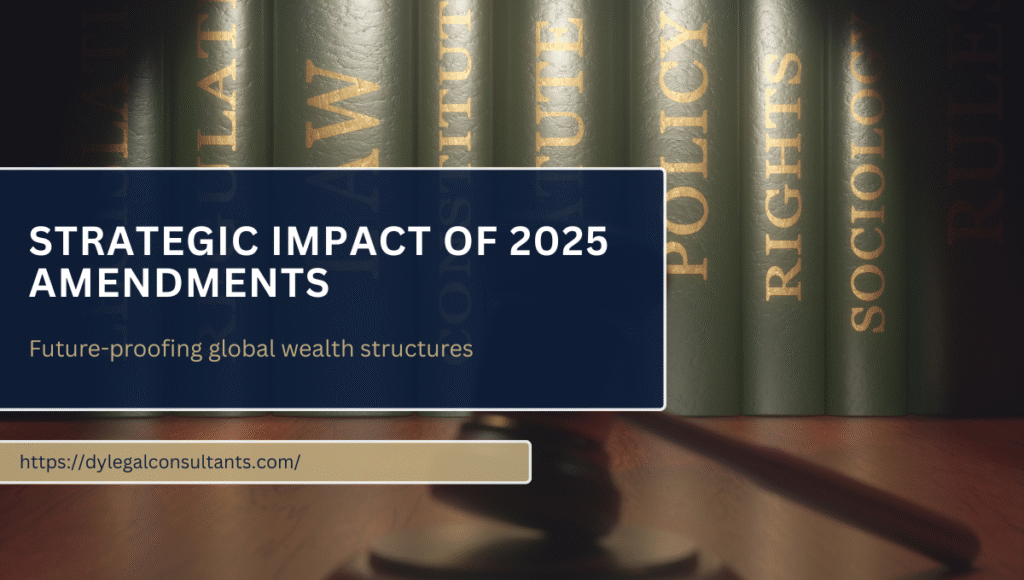
VI. Conclusion: A Modern Framework for Your Global Legacy
The RAK ICC Foundations Regulations 2025 amendments represent a significant and strategic step forward, strengthening the jurisdiction’s position as a leading and innovative hub for international wealth management. These updates show a proactive and responsive approach to the evolving and increasingly complex needs of the global wealth community.
The enhancements provide a robust, predictable, and secure framework for asset protection, succession planning, and charitable giving. The strengthened legal certainty, improved dispute resolution mechanisms, and increased structural flexibility collectively position RAK ICC Foundations as an exceptionally attractive option for sophisticated wealth planning.
It is highly recommended that you and your professional advisors seek specialized legal counsel. Understanding the details of these comprehensive enhancements is crucial to effectively use the new provisions for optimizing your global wealth planning, ensuring strong asset protection, and implementing resilient succession strategies. RAK ICC’s commitment to providing a dynamic, robust, and secure framework is designed for the complexities of today’s global economy and the lasting preservation of family wealth across generations.
Also Read: Top 10 Rental Dispute Lawyers in Dubai
VII. Why choose DY Lawyers and Legal Consultants
DY Lawyers and Legal Consultants is a registered agent with RAK ICC and provides support in the formation of foundations and companies with them. Various clients trust us because of the transparent, bespoke, and trustworthy solution we provide.
Our law firm in Dubai is known for maintaining the confidentiality of our clients and providing them with the best legally protected solutions. This makes us different from others.
If you are also looking for an enhanced and legally protected structure for your lifetime assets with confidentiality, then DY Lawyers and Legal Consultants is the right place for your corporate and commercial needs.
You can contact us today via email at [email protected] or call us at +971501063470 or +971551470302.
Disclaimer: The content in this article is provided for informational purposes only and does not constitute legal advice.

